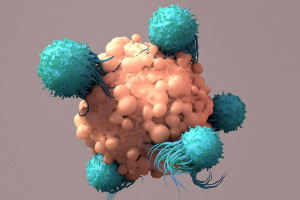Here’s What’s Next for Gene Therapy
With FDA approval behind a few of these treatments, researchers are building the path to Gene Therapy 2.0.

Getty Images
Gene therapy was once viewed as science fiction; the idea of using a person’s own genes to fight disease in the body was merely a myth. But it is now recognized as a potential cure for everything from cancer to heart disease. Gene therapy’s recent validation may make it appear to be an overnight success, but in fact, iterations of the treatment have been in the works for more than three decades. And now with approval from the FDA, researchers are already looking at what’s next for the treatment.
At last week’s BIO Conference, NextHealth PHL spoke with several leaders in the life sciences about cost, supply chain management, and efficacy for gene therapy use in additional diseases — all issues that continue to loom over researchers as they move toward Gene Therapy 2.0, the treatment’s next generation. Here’s what will take gene therapy to the next stage, according to experts:
Be Practical About Outcomes
“The complicated answer that no one really wants to acknowledge about the current state of gene therapy is that this is going to be widely variable among patients. Patients are going to have different responses because we’re dealing with the immune system and the immune reaction to these diseases,” said Eric David, chief executive officer at Aspa Therapeutics. “The fact that this is a biologic product and not a chemical product means there are going to be idiosyncratic responses, running the gamut from terrible safety issues to it just not working in a patient. We’re going to have to figure all of this out as we go along. That’s why 2.0 as a term is important because it acknowledges the fact that we are very early in this game.”
Lower Costs
“The biggest contributors to the cost of gene therapy are raw materials and manufacturing. We’d love to get those costs down. That’s why we need some breakthroughs, either incremental or really disruptive, to get to a lower cost,” said Irene Rombel, senior director of strategic analysis, external innovation, discovery, product development and supply at Janssen Research & Development, pharmaceutical companies of Johnson and Johnson.
“Biologic products will always be more expensive than small molecule products but the costs will come down. It might not happen in the next year or two but they will come down, probably dramatically, as there is more innovation,” Eric David said.
Improve Manufacturing
“There are still a couple of huge barriers, especially on the manufacturing front. Not only do I think about discovery, but manufacturing at scale at an acceptable cost of goods,” Rombel said. “If you think about a disease that requires systemic delivery for a large population, there aren’t really significant resources to do that at scale. We’ve made huge progress but we have to have some impressive incremental improvements in technology and manufacturing to be successful.”
“For any gene therapy company these days, manufacturing has to be a central strategic pillar for the organization. Having in-house process development expertise is critical,” said Nicholas Boyle, vice president of corporate strategy and business development at Tocagen. “We have to consider what happens when gene therapy really takes off. With all of the trials in development now, five years down the road will be remarkable, but will the capacity be there?”
Build Infrastructure
“The FDA predicts that in 2025 there will be between 10 and 15 cell and gene therapy products approved per year going forward. So we’re building a new industry,”said Bruce Levine, the Barbara and Edward Netter professor of cancer gene therapy at the University of Pennsylvania. “I like to make the analogy to the automobile industry. If you think back to 1900, how many automobile mechanics were there? How many service stations? The whole infrastructure needs to be built up, from workforce education training to technology development. When we talk about investing in companies, we’re also investing in all of the infrastructure that makes those companies work. We need trained people, we need tools and equipment makers as well. It will take the whole continuum to enhance the field.”
Continue to Collaborate
“It’s absolutely necessary for us to continue integrating knowledge and integrating teams,” Levine said. “We can’t do what we do without superb clinical expertise, regulatory expertise, teams managing patients, the laboratories that are the seed of what we turn into developing clinical trials; it has to work together.”


